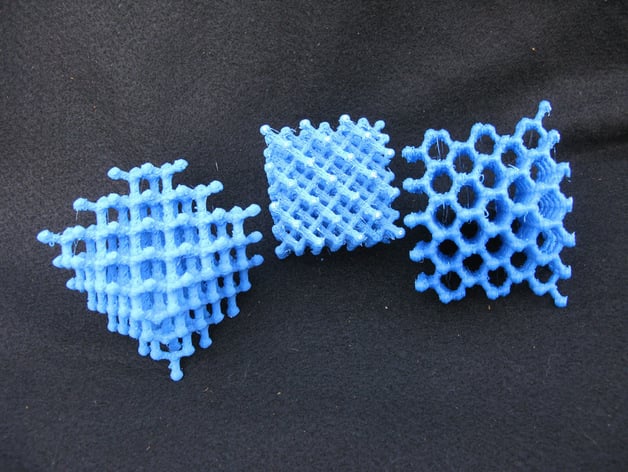
Diamond Lattice Model
thingiverse
The diamond lattice is a traditional teaching tool due to its cubic cell structure where each carbon atom forms four bonds. With octahedral symmetry, each of the 12 edges' views in the cell are identical. The Naval Research Laboratory previously hosted a collection of crystal lattice structures but no longer does so; new links can be found. A fortran program, expand_diamond.f, was used to create openSCAD module calls from diamond unit cell coordinates and print 27-cell cube models using an MK7 extruder. Prints were successful with minor issues at two edges, which were removed for perfect prints. Three models are displayed in the picture, with rafts leaving marks on detached atoms. The expand_diamond.f program and best stl output are provided, along with openSCAD program instructions using rafts to make 23 pads that easily pop off completed prints. Attempts at printing smaller open models were not successful with reduced atomic radii; changing the radius from .5 to .3 requires about 7 hours of rendering on the user's machine.
With this file you will be able to print Diamond Lattice Model with your 3D printer. Click on the button and save the file on your computer to work, edit or customize your design. You can also find more 3D designs for printers on Diamond Lattice Model.
